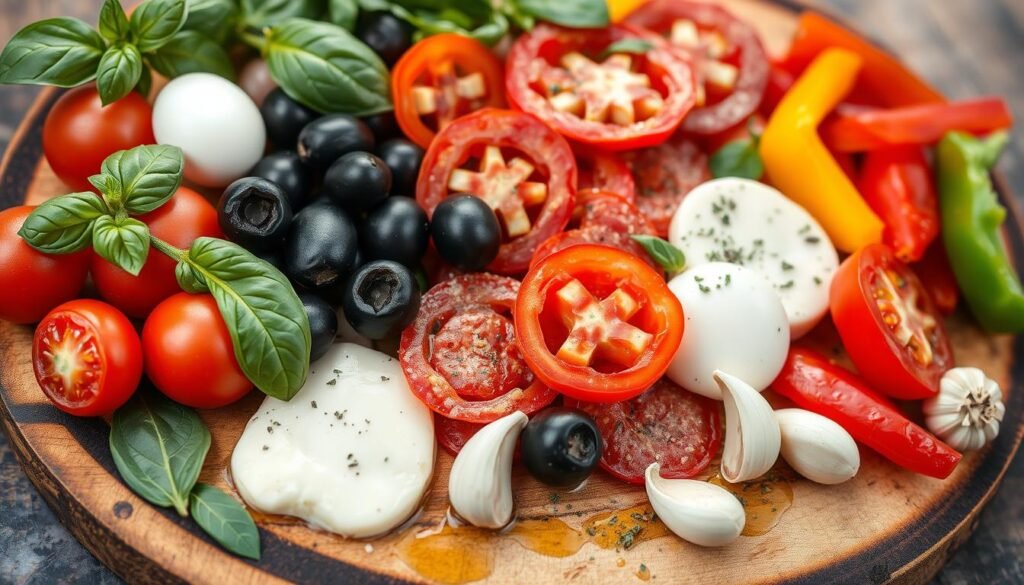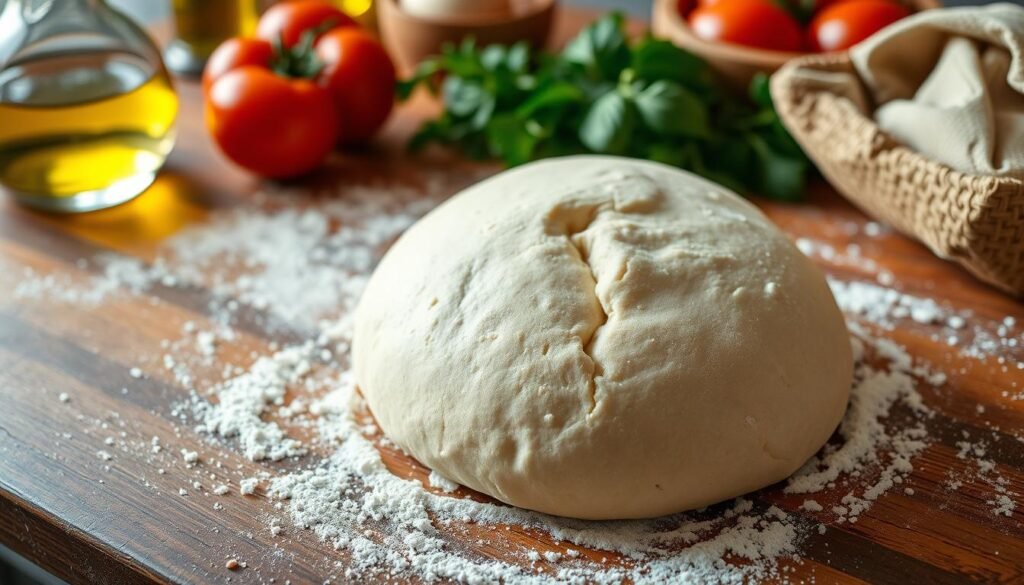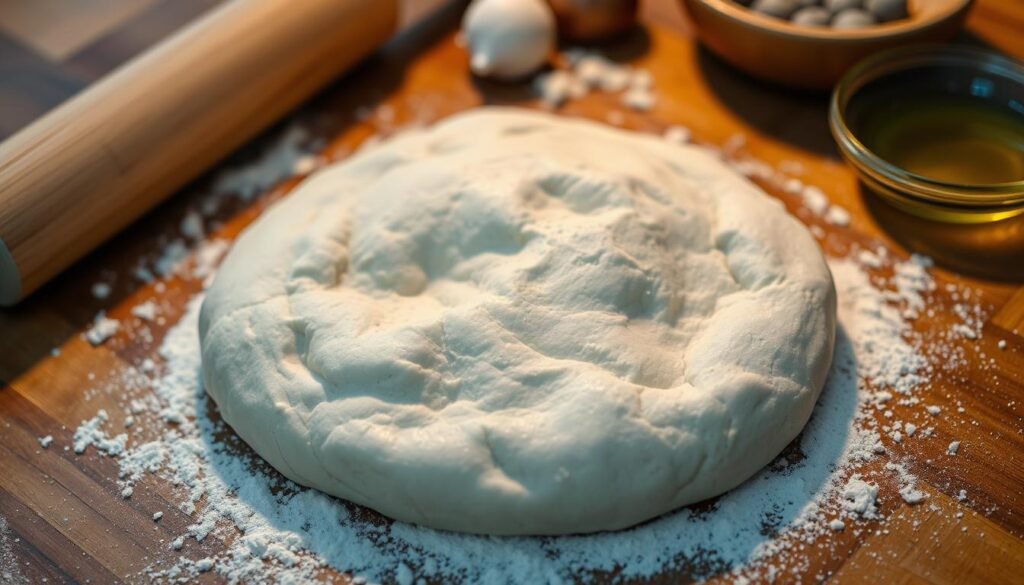Step-by-Step Guide to Perfect Homemade Pizza Made Easy: 2025—if you’ve ever dreamed of mastering the art of pizza making, this is your ultimate go-to resource! Making homemade pizza has evolved in recent years, with fresh techniques and tools making it easier than ever to achieve pizzeria-quality results in your own kitchen. From selecting the right ingredients to perfecting the dough, this guide will take you through each stage in crafting the perfect pizza, covering everything from sauce preparation to creative topping combinations.
Why Make Pizza at Home?
Pizza is universally loved, yet it’s often something we leave to restaurants or takeout. However, there’s a special satisfaction in crafting your pizza from scratch. Making pizza at home gives you control over ingredients, allowing you to customize flavors to match your cravings while using fresh, high-quality ingredients. Plus, it’s a fun, hands-on experience that you can enjoy alone, with family, or with friends. By following this Step-by-Step Guide to Perfect Homemade Pizza Made Easy: 2025, you’ll unlock the secrets to a delicious, personalized pizza every time.

Essential Ingredients: The Building Blocks of Piz
Making great pizza starts with high-quality ingredients. Here’s a quick breakdown of the essentials you’ll need to get started:
- Flour: Flour is the foundation of your pizza dough. While all-purpose flour works, using a high-protein bread flour or ‘00’ flour is best for achieving a chewy, pizzeria-style crust.
- Yeast: Active dry yeast is a go-to for pizza dough, helping it rise and develop flavor. Make sure your yeast is fresh to avoid dough issues.
- Water: Room temperature water is typically best, as it aids the yeast activation and mixing process.
- Salt: A pinch of salt adds flavor to your dough and controls yeast fermentation.
- Olive Oil: Adding olive oil to your dough will make it softer and easier to stretch.
Next, you’ll need toppings, which can be as classic or creative as you like. Stick with traditional mozzarella and tomato sauce, or experiment with toppings like fresh basil, arugula, goat cheese, or even pineapple for a twist.
Quality Ingredients Checklist
- Choose top pizza toppings like fresh mozzarella, pepperoni, and veggies.
- Use either homemade or store-bought pizza dough.
- Go for a tasty pizza sauce, like tomato-based or pesto.
- Add grated Parmesan cheese for extra flavor.
Optional Tools for Professional Results
Want to improve your pizza skills? Get some extra tools. A pizza stone or baking steel gives a crispy crust. A pizza oven thermometer helps control the temperature for perfect baking pizza.
| Essential Tools | Quality Ingredients | Optional Tools |
|---|---|---|
| Pizza peel Rolling pin Pizza cutter | Pizza toppings Pizza dough Pizza sauce Parmesan cheese | Pizza stone Baking steel Pizza oven thermometer |
With the right tools and ingredients, you’re ready to make delicious homemade pizza. It will wow your family and friends.

Mastering the Perfect Pizza Dough
Making the perfect pizza dough is key to a tasty homemade pizza. Whether you want a classic Neapolitan-style or a New York-style slice, knowing how to make dough is crucial. We’ll look at the ingredients, kneading, and rising to make the best pizza dough.
Unlocking the Secrets of Pizza Dough
The secret to great pizza dough is in the right mix of flour, water, yeast, and salt. Knowing how each ingredient works lets you try different doughs. For example, Neapolitan pizza dough is light, while New York-style pizza dough is crisp and foldable.
| Dough Style | Key Characteristics | Ideal Flour |
|---|---|---|
| Neapolitan Pizza | Light, airy, and slightly chewy | High-protein flour (e.g., bread flour) |
| New York-Style Pizza | Crisp, foldable crust | All-purpose flour |
Good kneading and fermentation are vital for the perfect pizza dough recipe. By understanding these techniques, you can make a dough that’s flavorful and easy to work with.

“The secret to a perfect pizza dough is in the simplicity of the ingredients and the care you put into the process.”
Step-by-Step Guide to Perfect Homemade Pizza
Making the perfect homemade pizza begins with preparation. Follow these steps to master pizza dough making. You’ll get delicious results in your kitchen.
Preparing Your Workspace
Start by clearing a clean, spacious area. Make sure your countertop is free of crumbs or debris. Lightly flour the area to prevent the dough from sticking.
Gather all the tools and ingredients you need. This way, you can work efficiently.
Mixing and Kneading Techniques
- In a large mixing bowl, combine the pizza dough recipe ingredients, including flour, yeast, water, and salt.
- Use a wooden spoon or your hands to mix the ingredients until a shaggy dough forms.
- Turn the dough out onto a lightly floured surface and knead for 5-10 minutes, until the dough becomes smooth and elastic.
- Avoid overworking the dough, as this can result in a tough crust.
Proper Dough Fermentation
After kneading, place the dough in a lightly oiled bowl. Cover it with a damp towel or plastic wrap. Let it rise in a warm, draft-free area for 1-2 hours, or until it has doubled in size.
This fermentation process is crucial for developing the perfect step-by-step guide to perfect homemade pizza.

“The key to a perfect crust is in the fermentation. Allow your dough to rise slowly and develop complex flavors for the best results.”
By following these simple steps, you’ll be well on your way to creating the pizza dough recipe of your dreams. Stay tuned for the next section, where we’ll cover crafting the ultimate pizza sauce.
Crafting the Ultimate Pizza Sauce
Making the perfect pizza sauce from scratch is a true art. It’s the base for a great Neapolitan pizza or New York-style pizza. Finding the right mix of flavors is key. Let’s dive into the secrets of a tasty homemade pizza sauce recipe.
The traditional Neapolitan pizza sauce is simple. It’s made with ripe tomatoes, olive oil, and herbs. The tomatoes’ sweetness is the star, with a hint of garlic and basil. New York-style sauce is bolder, with oregano, onion, and sometimes sugar to balance the tomatoes’ acidity.
- Start with high-quality, canned whole tomatoes or fresh, ripe Roma tomatoes.
- Gently sauté garlic and onions (for New York-style) in olive oil before adding the tomatoes.
- Season with a blend of dried herbs like basil, oregano, and a pinch of crushed red pepper flakes.
- Simmer the sauce for 30-45 minutes, allowing the flavors to meld and the consistency to thicken.
- Taste and adjust the seasoning as needed, balancing the sweetness, acidity, and savory notes.
Remember, the secret to a great pizza sauce is using fresh, flavorful ingredients. Take your time to let the flavors develop. With practice, you’ll make the ultimate pizza sauce that will take your homemade pizzas to new heights.
“The secret to a great pizza is all in the sauce.” – Enzo Coccia, Legendary Neapolitan Pizza Master
Choosing and Preparing Your Toppings
Starting your homemade pizza journey is all about picking the right toppings. You can go for classic favorites or try something new. The world of pizza toppings is vast and exciting.
Classic Topping Combinations
Classic toppings are always a hit. They include:
- Pepperoni
- Mushrooms
- Onions
- Bell peppers
- Sausage
- Olives
Innovative Flavor Pairings
Want to try something different? Here are some unique topping ideas:
- Pineapple and prosciutto
- Feta, spinach, and sun-dried tomatoes
- Barbecue chicken and red onions
- Pesto, roasted garlic, and artichoke hearts
Proper Topping Distribution
Getting your toppings right is key. Here’s how to do it:
| Topping Type | Ideal Placement |
|---|---|
| Meats | Evenly spaced across the pizza |
| Vegetables | Concentrated in the center, with a lighter distribution towards the edges |
| Cheeses | Covering the entire surface, with a focus on the edges to prevent a dry crust |
“The secret to a great pizza is all in the toppings. Experiment, have fun, and don’t be afraid to try new flavor combinations!”
Rolling and Shaping Your Pizza Like a Pro
Learning to roll and shape pizza dough is crucial for a great crust. You can make a classic Neapolitan, a deep-dish Chicago, or a New York-style slice. The way you shape it can really change the taste.
Unleashing the Dough’s Potential
Start by getting your dough ready. Make sure it’s proofed and risen right. Then, use a floured surface to stretch and shape it. Avoid overworking the dough, as this can lead to a tough, chewy texture.
Techniques for Different Pizza Styles
- For a thin-crust Neapolitan pizza, use a gentle, stretching motion to create a delicate, airy crust.
- For a thick, Chicago deep-dish pizza, press the dough evenly into a deep-dish pan, building up the edges to create a sturdy, high-walled crust.
- For a classic New York-style pizza, use your knuckles to stretch the dough outward, creating a foldable, crispy-yet-chewy crust.
For any style, work the dough gently and lightly. This helps avoid tears and keeps the dough in shape. Let the dough guide you to the perfect form.
| Pizza Style | Shaping Technique | Crust Characteristics |
|---|---|---|
| Neapolitan | Gentle stretching | Thin, airy, and delicate |
| Chicago Deep Dish | Press into deep pan | Thick, sturdy, and high-walled |
| New York-Style | Stretch with knuckles | Foldable, crispy-yet-chewy |
With practice and patience, you’ll get better at shaping dough. Enjoy the journey, try new things, and feel proud of your homemade pizza crust.
Secrets to Achieving the Perfect Crust
Making a pizza with a crispy, flavorful crust is every pizza lover’s dream. The secret is in controlling the temperature, choosing the right baking surface, and mastering the timing of your pizza-making.
Temperature Control Tips
To get a crunchy crust, keep your oven at 450°F to 500°F (232°C to 260°C). If you have a wood-fired oven, heat it up to 800°F (427°C) or more. This will give you that charred, bubbly crust everyone loves.
Baking Surface Options
- Pizza Stone: A preheated pizza stone acts like a brick oven, pulling moisture from the dough for a crisp crust.
- Baking Steel: Like a pizza stone, a thick baking steel holds heat well for a perfectly crispy crust.
- Baking Sheet: While not as good as a stone or steel, a sturdy baking sheet can still give you a nice crust if preheated.
Timing and Techniques
Timing is key for a perfect pizza crust. Bake for 12-15 minutes, flipping it halfway for even browning. In a wood-fired oven, it’s quicker, just 90 seconds. Use the broiler for the last minute to add char and crispness.
| Baking Method | Temperature | Baking Time |
|---|---|---|
| Conventional Oven | 450°F – 500°F (232°C – 260°C) | 12-15 minutes |
| Wood-Fired Oven | 800°F+ (427°C+) | 90 seconds |
“The perfect pizza crust is the foundation for any great homemade pizza. With the right temperature control, baking surface, and timing, you can achieve that irresistible crunch and flavor every time.”
Popular Pizza Styles and Their Techniques
Homemade pizza offers a world of tasty styles, each with its own special techniques. You can try the classic Neapolitan pizza, the thick Chicago deep dish pizza, or the iconic New York-style pizza. There’s something for every pizza lover to enjoy.
Neapolitan Pizza: A Taste of Italy
Neapolitan pizza comes from Naples, Italy. It’s famous for its thin crust and simple toppings. To get the perfect crust, a wood-fired oven is used. The dough is kneaded by hand and fermented for hours, making it light and airy.
Chicago Deep Dish: Thick, Indulgent Perfection
Chicago deep dish pizza is a treat with its thick crust and lots of toppings. To make it, you need a special pan and a baking method. This lets the crust rise and the toppings blend together in a flavorful mix.
New York-Style Pizza: Foldable Perfection
The New York-style pizza is known for its large, thin slices. The dough is stretched and tossed to get the perfect crust. It’s topped with tomato sauce and cheese, making it a favorite everywhere.
Whether you love the classic Neapolitan pizza, the rich Chicago deep dish, or the foldable New York-style, trying these styles can elevate your homemade pizza. It’s a journey to deliciousness.
Troubleshooting Common Pizza-Making Problems
Making the perfect homemade pizza can be tough. But, with the right tips, you can solve any problem and make delicious pizzas. Let’s look at common issues and how to fix them. This will help you become a pizza-making expert.
Dough Issues and Solutions
Dealing with sticky dough is a common problem. If your dough is too sticky, add a bit more flour while kneading. If it’s too dry, add a small amount of water until it’s smooth and elastic.
Having trouble with dough not rising? Make sure your yeast is fresh and proof it well. Also, keep your kitchen warm for the dough to rise properly.
Baking Challenges
Getting the perfect crust can be tricky. If your crust browns too fast, preheat your baking surface (like a pizza stone) at a higher temperature. For an undercooked crust, bake it longer or at a higher temperature.
Keep an eye on your pizza while it bakes. This way, it won’t burn or get too dry.
Texture Problems
- Soggy or Wet Pizza: Use less sauce or toppings. Also, drain wet ingredients well before assembling.
- Tough or Chewy Crust: Don’t overwork the dough. Handle it gently and knead less.
- Crumbly or Dry Crust: Use the right dough recipe and don’t overbake.
By solving these common baking pizza problems, you’ll make delicious pizzas. Remember, practice is key. Don’t be afraid to try new things and find what works best for you.
Creative Pizza Variations and Special Dietary Options
Explore a world of creative pizza variations and special dietary options. Find healthy pizza options with nutrient-dense ingredients and alternative crusts. There’s a pizza for every palate and dietary need, from gluten-free to vegan and low-carb.
Try innovative pizza toppings for a unique twist. Use vegetables like roasted artichokes and caramelized onions. Add bold flavors like spicy Italian sausage or savory prosciutto. For a plant-based option, try grilled mushrooms, roasted red peppers, and creamy cashew cheese.
Whether for dietary needs or to try new flavors, the options are endless. Enjoy Mediterranean-inspired pies with olives and feta or Asian-fusion pizzas with tender chicken and fresh cilantro. Get creative and make a one-of-a-kind pizza experience.
FAQ
What are the essential tools and ingredients needed to make homemade pizza?
To make the perfect homemade pizza, you need a few key tools. A sturdy pizza peel, a baking stone or steel, and a good pizza dough recipe are must-haves. You’ll also need quality ingredients like fresh mozzarella cheese, ripe tomatoes for the sauce, and tasty toppings.
How do I make the perfect pizza dough from scratch?
Making the perfect pizza dough at home is a bit of an art. First, mix the dough ingredients like flour, yeast, water, and salt correctly. Then, knead the dough and let it ferment for the right time. With practice, you’ll get the hang of making great homemade pizza dough.
What’s the best way to make a delicious pizza sauce from scratch?
Making your own pizza sauce is easy and lets you control the flavors. Start with good canned tomatoes or fresh tomatoes. Add herbs, garlic, and seasonings to make a sauce that goes well with your pizza. Try out different recipes to find your favorite.
How do I choose and prepare the perfect pizza toppings?
Choosing toppings for your pizza is fun because you can pick anything you like. Try classic combos like pepperoni and mushrooms or get creative with new flavors. Make sure to spread toppings evenly for the best taste. Also, consider healthy options like veggies and lean meats for nutritious pizzas.
What’s the secret to achieving the perfect pizza crust?
Getting the perfect pizza crust is all about the right temperature, baking surface, and timing. Make sure your oven is hot, and use a baking stone or steel for better heat. Try different baking methods, like a wood-fired oven, to get that crispy, tasty crust.
How can I troubleshoot common pizza-making problems?
If your homemade pizza doesn’t turn out right, don’t worry. There are fixes for common issues. Adjust your dough recipe, baking temperature, or how you place toppings to solve problems. With a bit of trial and error, you’ll make delicious pizzas every time.
